Classic motorbike fans love a good two-stroke, and few companies have greater heritage than Suzuki when it comes to smoking zingers.
The company won numerous Grand Prix world championships with small capacity two-strokes in the 1960s, famously engaging German rider/engineer Ernst Degner from MZ, before focussing on the premier 500cc class in the 1970s. Barry Sheene won his two world titles on Suzuki RG500s in 1976 and 1977, with Marco Lucchinelli, Franco Uncini, Kevin Schwantz and Kenny Roberts Junior all winning world titles on Suzuki strokers in the decades that followed.
Suzuki two-strokes have also held a certain allure for road riders, so we put on our blue hazy glasses to look at five of the best from over the years.
Suzuki T500
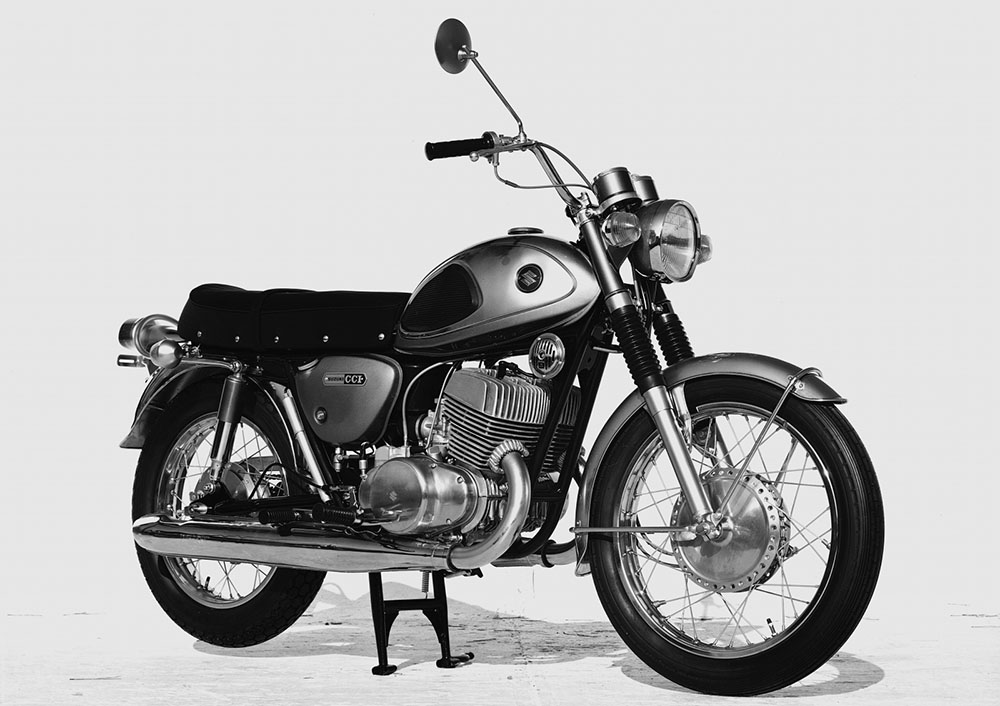
Introduced in 1968, the T500 was the first mass produced 500cc two-stroke.
Up to that point, strokers generally has a capacity limited to around 350cc for engineering reasons. It was commonly accepted that going any bigger would create an unreliable engine which would overheat, but Suzuki challenged this with the twin-cylinder, air-cooled, T500.
Suzuki had a good reputation with its smaller capacity two-stroke designs but the T500 gave the company a product which could compete with the bigger four-stroke twins from the European manufacturers.
By modern standards the T500’s 47bhp might not sound like much but it was in line with the iconic Triumph Bonneville T120, which was regarded as the superbike of the day. With a top speed of over 110mph, the Suzuki was as quick as the Brit bikes of the era but lighter and simpler in its design. The concept would develop quickly, gaining an update in 1969 and evolving into the GT500 in 1971, before being superseded by the three-cylinder GT550 a year later. This featured an early ram air system which boosted power to 50bhp.
The T500 had a racing heritage too. It formed the basis of the TR500 race bike with which Suzuki entered in 500cc Grand Prix races between 1969 and 1973, before being replaced by the legendary RG500 square four racer. These early race bikes enjoyed some success, winning at the Isle of Man TT and taking podium finishes in several Grands Prix.
Suzuki GT750
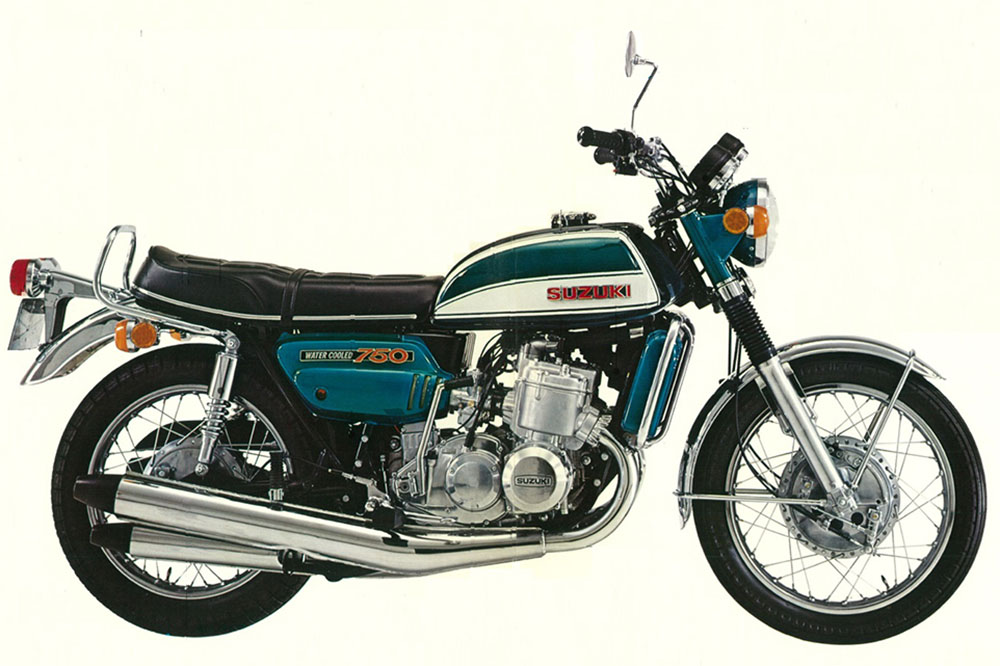
Pushing the capacity barriers even further, the GT750 arrived in 1971 and was an engineering tour de force of its time.
It was the first liquid cooled Japanese motorcycle and arrived at a time when all mainstream motorcycles were still air cooled. This allowed the large capacity engine to remain reliable and not overheat. The design was developed from the T500, drafting on a third cylinder to create a capacity of 738cc. With 67bhp and a healthy 75Nm of torque, it was Suzuki’s range topper and a competitor to the Honda CB750.
With a wet weight of 235kg, it was heavy and more of a tourer than an out and out sportsbike. The heft saw it nicknamed the Water Buffalo in the States, while us Brits affectionately still refer to it as the Kettle. Handling and brakes, as with most performance bikes of the era, were sketchy but it remains a cult classic and represents a significant technological advancement in 1970s motorcycling.
Suzuki GT250 X7
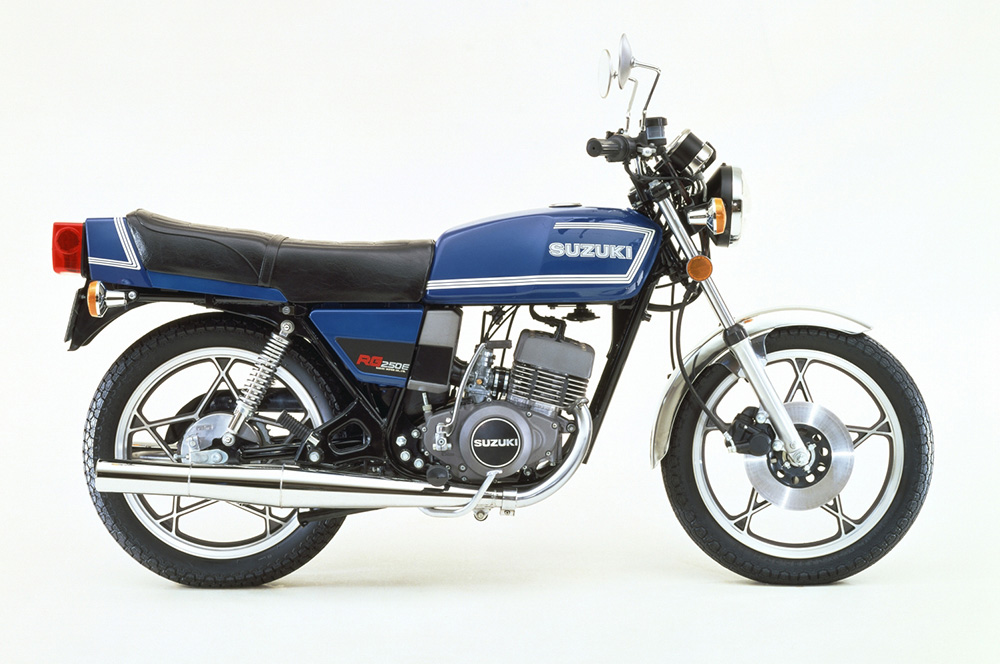
Where Suzuki’s wide range of two-strokes had carried the ‘GT’ designation in the early 1970s, an evolution towards sportier models saw the RG prefix adopted later in the decade.
The RG moniker was used on the factory 500cc Grand Prix race bike which was introduced with some success in 1974, and which had powered Barry Sheene to the 1976 and 1977 world titles. The first RG road bike was the RG50 moped of 1977, with a range of light sportsbikes, consisting of the RG125, RG185 and RG250 arriving a year later. The GT name still stuck in the UK, with the RG250 being known as the GT250 X7.
A competitor to the very popular Yamaha RD250, the X7 was one of the highest performing learner legal machines of the era. Weighing just 126kg and making 30bhp, the air-cooled parallel twin motor featured a reed valve, while the styling, front brake disc and cast wheels were also innovative for the time.
In 1983 it was replaced by the revolutionary RG250 Gamma which, with its fairing, water-cooled motor, monoshock rear suspension and high specification, was arguably the first true race replica motorcycle.
Suzuki RG500 Gamma
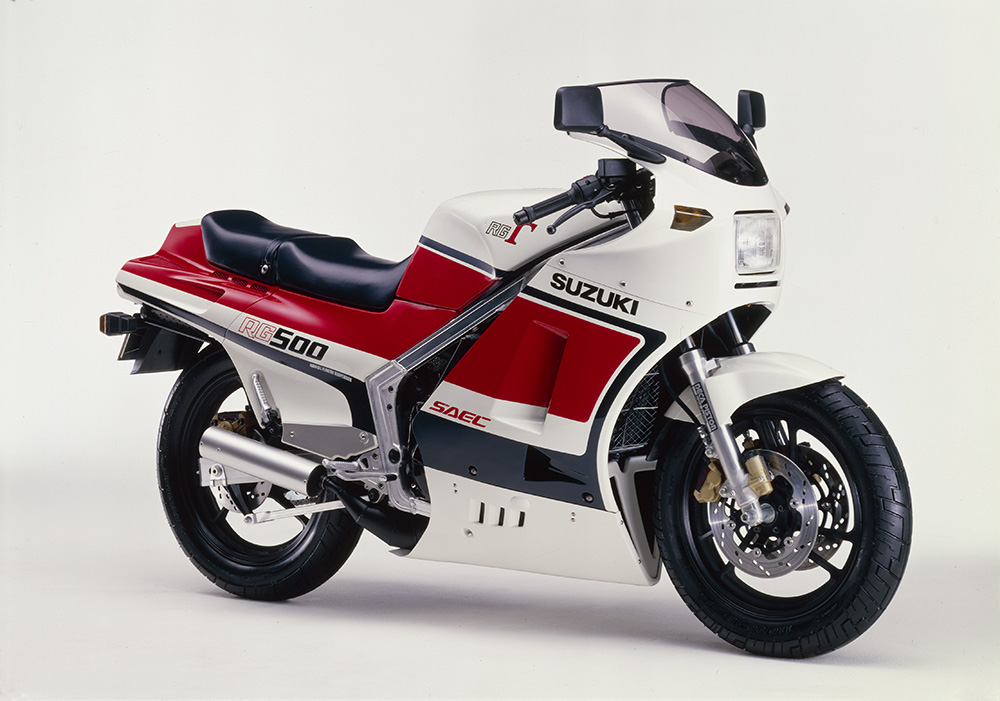
We feel bad about not giving the RG250 Gamma its own entry in our selection of the top five Suzuki two-strokes, but the big brother which would come a couple of years later would be the ultimate in 1980s race reps.
Introduced in 1985, the RG500 Gamma was a close replica of the Grand Prix racer which had been one of the leading bikes in the late 1970s and early 1980s. The twin crankshaft, square four, motor was based on that of the race bikes, while the box section aluminium frame also came from the track.
Suzuki claimed 95bhp for this road going rocket, although its commonly accepted that bikes sold to the public delivered a good bit less than this, and that bikes ridden by the press may have been tweaked a little. Regardless, they were still hugely entertaining to ride and commonly regarded as the best GP replica at a time when Honda (with the NS400) and Yamaha (with the RD500LC) would also stake their claim in the short lived sector. The model was produced for only two years, with less than 10,000 produced, making it a hugely desirable classic motorcycle today.
Suzuki RGV250
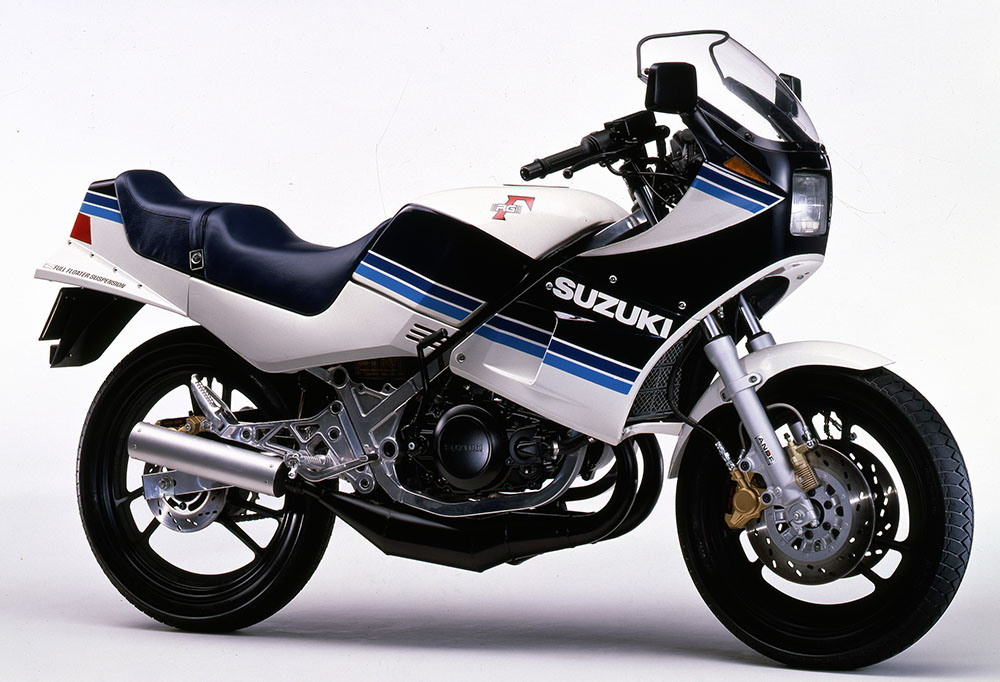
If the RG250 Gamma had been revolutionary in 1983, the RGV250 which followed five years later was equally transformational.
The 1980s was a significant period of development in sports bikes with new technology filtering down from the race track every year and by 1988 we had reached the zenith. The 250cc class was particularly important for the four Japanese manufacturers as domestic licencing laws meant that these were huge sellers in their home market. As a result all four tried to outdo each other with their race replicas, which looked like they’d just rolled off a Grand Prix grid.
Suzuki’s offering was as good as any, with the RGV echoing the looks of the RGV500 racer upon which Kevin Schwantz was mesmerising race fans around the world. This all-new model featured a 90-degree V-twin engine, as popularised in 250cc Grand Prix racing, and made nearly 60bhp.
Unlike many other Japanese market 250s, like Honda’s NSR and Yamaha’s TZR, the RGV was officially imported into the UK, where it was hugely popular with road riders and racers alike.
The 1992 version, designated the RGV250 N, was the pinnacle of Suzuki two-strokes available in Europe. With its then innovative upside down forks, stacked silencers and banana shaped swingarm it was the raciest race replica around. This bike also donated its engine to Aprilia’s RS250, but emissions laws were soon to legislate high-performance two-strokes out of the market. The RGV250 remained on sale in the UK until 1997, with the Aprilia making into the 21st century.
However, the ultimate Suzuki two-stroke was the stunning RGV250SP of 1996. This was a Japanese market only model (although a few made it here as private imports). The SP shared virtually nothing with the version we got. The 70-degree V-twin engine was based on Suzuki’s 250cc GP bike design, while the dry clutch and removeable gearbox confirmed it was a machine designed for the track. They were limited to the 40bhp allowed under Japanese licence laws but had the look of a machine with more than twice the power.



